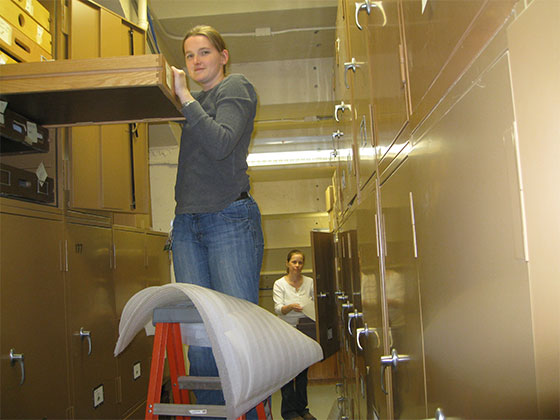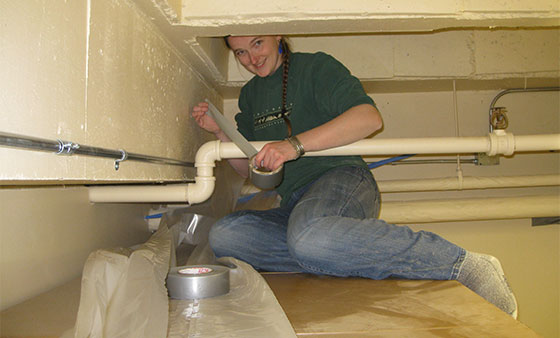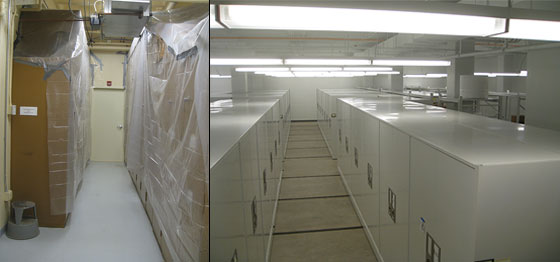Moving priceless objects can be daunting. Depending on the object, simply moving a rare or priceless object from one table to another or even shifting it a few inches or feet can be stressful. Moving thousands of priceless objects over 300 feet is even more daunting; moving priceless objects under a time schedule, even more so; moving priceless objects under a time schedule, through a construction zone, even more yet. However, with proper planning it can be done.
In the early days of planning the Heritage Center expansion it was quickly discovered that the State Fossil Collection was potentially in harm’s way with all the construction going on in and around the building. Not necessarily from a large piece of machinery or debris, but instead from possible exposure to the elements of nature (water and steeply fluctuating temperatures and humidity levels). Both of these elements can wreak havoc on fossils if not properly prepared for. After all the pros and cons of keeping the collection where it was versus moving the collection to an offsite storage facility were weighed and debated, the decision was made to keep the collection in place and protect the collection from any foreseen hazards to the best of our ability.
In this case water was our main concern. A minor concern was vibration from nearby heavy machinery. To protect the fossils from vibration, foam was placed in drawers and between fossils, cradling each fossil (figs. 1 & 2). To protect it from dripping water, the collection was completely covered in plastic sheeting (fig. 3 & 4). Fossils were also removed from the first 12 inches above the floor in case the storage room should flood. The storage room was heavily monitored for any sign of problems over the next few months. Meanwhile a new storage room was being completed and filled with new, state of the art cabinets and storage compactors to house the important collection (fig. 5).
Finally moving day arrived. Due to all the things needing to be done our window to move the collection was small. A team of paleontologists and skilled volunteers moved thousands of fossils over the course of a few days, reorganizing the collection as we moved it.
The project has been completed and the collection receives routine and ongoing maintenance and organization.

Fig. 1 – Paleontologist Amanda Person (left) and paleo intern Samantha Pounds (right) placing foam padding between fossils.

Fig. 2 – Paleontologists Becky Barnes (left) and Amanda Person (right) placing foam padding between fossils.

Fig. 3 – Paleontologist Becky Barnes securing plastic sheeting on top of metal cases containing the ND State Fossil Collection.

Fig. 4 (left) – Metal cabinets containing ND State Fossil Collection covered in plastic to protect from possible water damage.
Fig. 5 (right) – The new cabinets holding the important ND State Fossil Collection.

